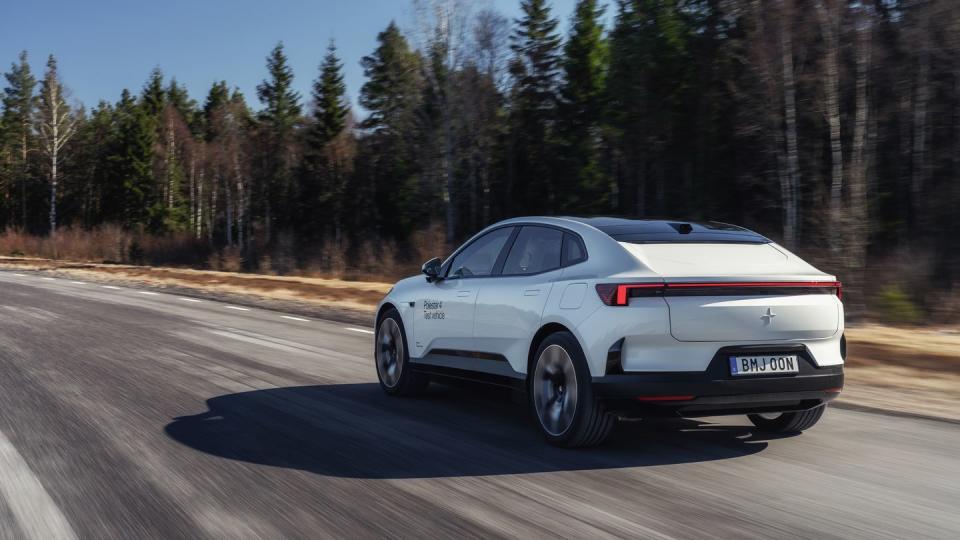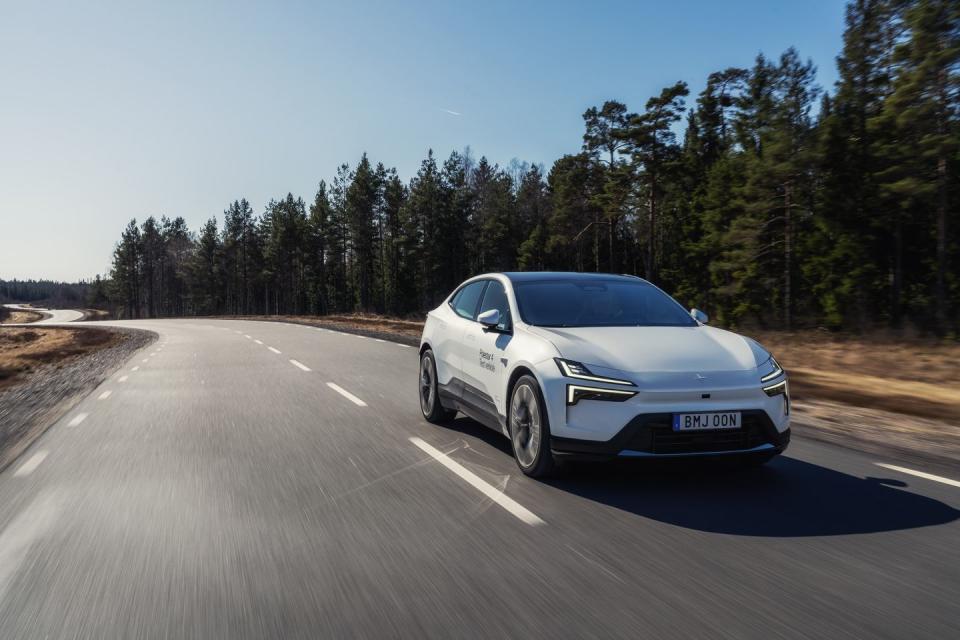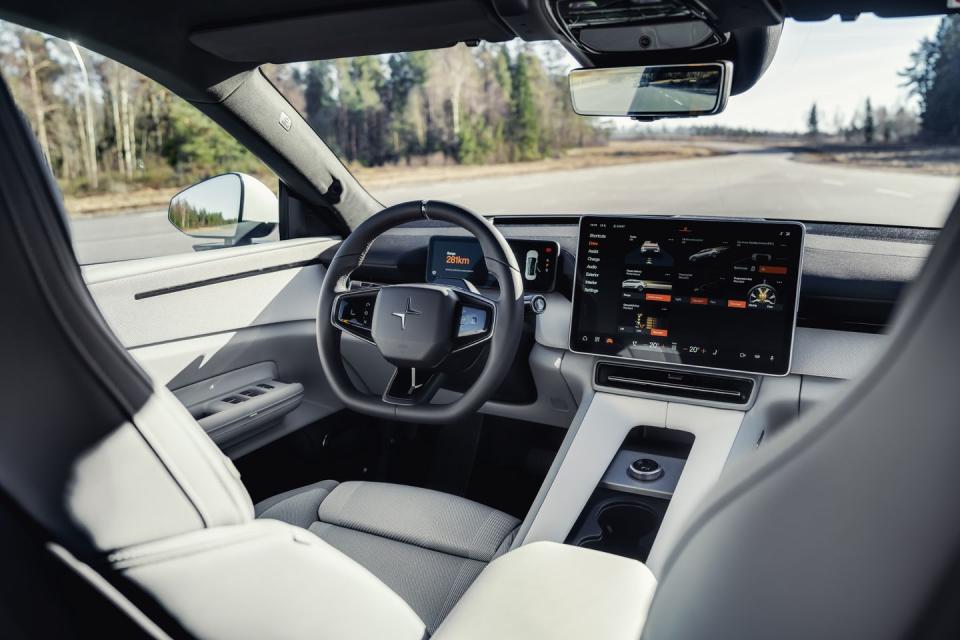2025 Polestar 4 Sheds a Vestigial Limb

In evolution, unnecessary appendages don't just fall off arbitrarily. As a vestige becomes less and less necessary for survival, it'll spend some time shrinking before it eventually disappears for good or becomes something else. Coupe-like SUVs have long sacrificed rear visibility for the sake of aesthetics, and instead of staying that course, the 2025 Polestar 4 is the first fish to take a walk in the sun and do away with the aft glass entirely. And, as we learned from some time with an engineering prototype, you won't miss it.
More Than Just a Missing Piece of Glass
The Polestar 4 isn't as physically imposing as its larger Polestar 3 sibling, which is billed as an electric competitor to the Porsche Cayenne. At 190.6 inches long, the 4 is about a half-foot longer than a Porsche Macan, and the Polestar's standard glass roof sits just over three inches lower than the German's roof does. The Swede's wheelbase is nearly eight inches longer, too, which makes for a vastly airier cabin—further aided by that gigantic glass panel overhead, stretching all the way over the second row.
Polestar offers the 4 in two distinct flavors. The long-range, single-motor configuration relies on a permanent-magnet synchronous electric motor producing 268 horsepower and 253 pound-feet of torque, which should shove the roughly 5000-pound Polestar to 62 mph in a claimed 7.1 seconds. Those looking for a little extra vim will find it in the dual-motor variant, which increases output to 536 horsepower and 506 pound-feet. In that version, 62 mph arrives much more hastily—in 3.8 seconds, by Polestar's stopwatch.

Regardless of what's providing the motivation, the electricity comes from the same tap. Both Polestar 4 variants rely on a CATL-built lithium-ion battery (of the nickel-manganese-cobalt variety, for the chemistry buffs) with 94.0 kilowatt-hours of usable capacity. Polestar estimates a European WLTP range of 379 miles for the RWD model and 360 miles with AWD. In more star-spangled terms, we'd wager estimates closer to the 300-mile mark when the EPA gets its turn.
On the charging front, the Polestar 4's 400-volt architecture will accept up to 22.0 kilowatts of AC juicin' (enough to go from empty to full in about 5.5 hours on a 16-amp circuit) and up to 200 kilowatts of that DC good-good—provided the fast-charge gods feel like showing up to work at your plug of choice. If they do, Polestar says a charge from 10 to 80 percent should take 30 minutes.
Driving the Polestar 4
While we have had our constructive criticism taken to heart during engineering-prototype drives, it's probably too late to tell Polestar, "Nah, there should really be glass back here." So with an open mind, we hopped behind the wheel of both Polestar 4 iterations—and, turns out, we were too enamored with the 4's test-track manners to even care about the missing glass.

We started in the dual-motor Polestar 4. Like any good performance-oriented EV, the all-wheel-drive 4 absolutely space-shuttles its way forward. Pedal response was good, not delivering everything all at once but not hiding all the beans in the back half of its travel either. Jam on the brakes like you're trying to grind those steel discs into a cloud of dust, and you're met with the opposite of dramatics; there is no squirming under heavy braking, just a whole lot of head-tilting g's.
The steering offers three different levels of artificial heft; we preferred it light, but even when the weight was dialed up, off-center response was quick, and it only required the lightest of touches to adjust the car's position. That may sound like a recipe for a lot of uncomfortable micro-darting on the road, but a quick run on a banked high-speed oval with Joakim Rydholm, Polestar's head of chassis development, proved that the steering shouldn't be twitchy on the highway.

 Yahoo Autos
Yahoo Autos 